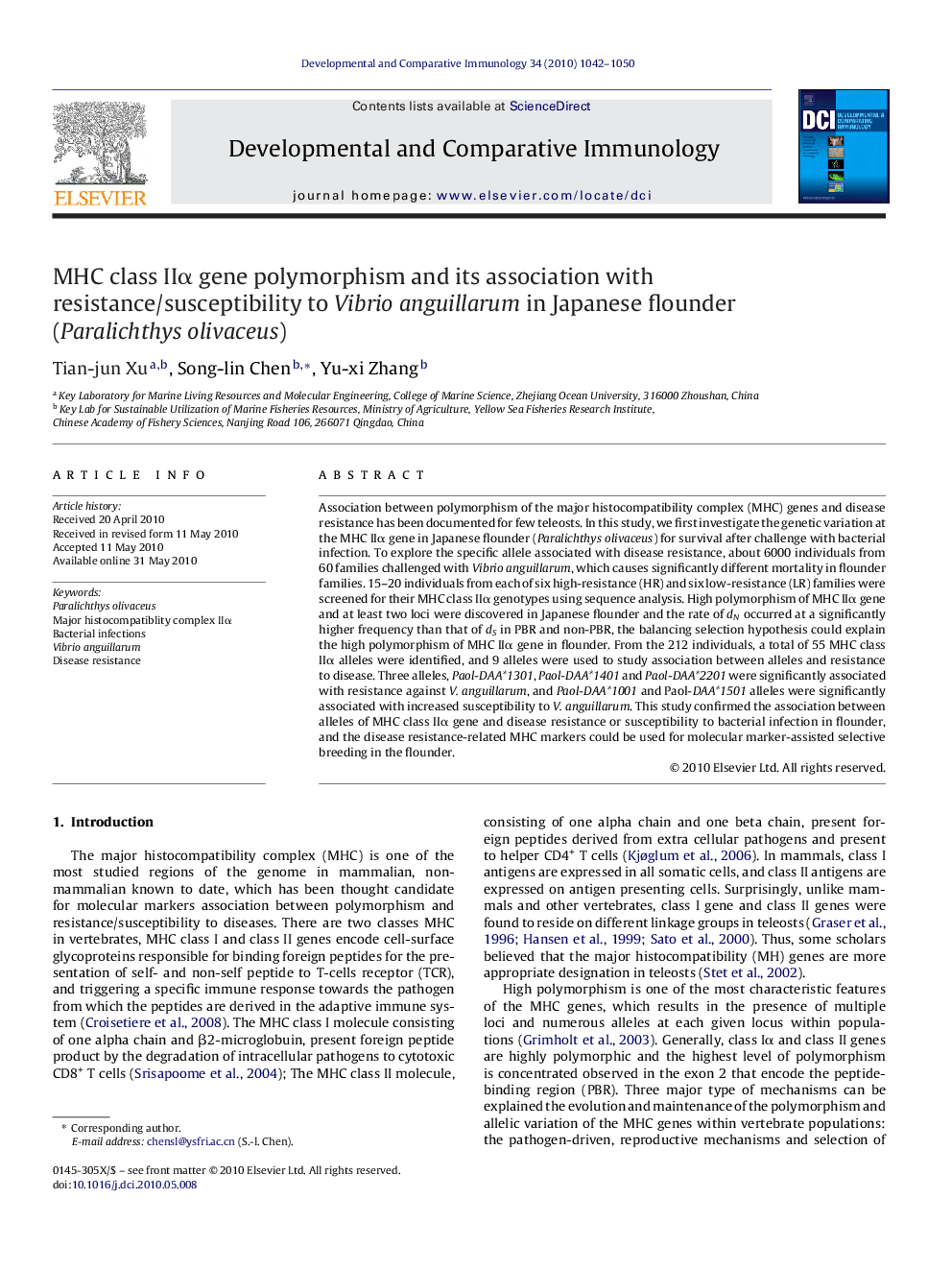| Article ID | Journal | Published Year | Pages | File Type |
|---|---|---|---|---|
| 2429755 | Developmental & Comparative Immunology | 2010 | 9 Pages |
Association between polymorphism of the major histocompatibility complex (MHC) genes and disease resistance has been documented for few teleosts. In this study, we first investigate the genetic variation at the MHC IIα gene in Japanese flounder (Paralichthys olivaceus) for survival after challenge with bacterial infection. To explore the specific allele associated with disease resistance, about 6000 individuals from 60 families challenged with Vibrio anguillarum, which causes significantly different mortality in flounder families. 15–20 individuals from each of six high-resistance (HR) and six low-resistance (LR) families were screened for their MHC class IIα genotypes using sequence analysis. High polymorphism of MHC IIα gene and at least two loci were discovered in Japanese flounder and the rate of dN occurred at a significantly higher frequency than that of dS in PBR and non-PBR, the balancing selection hypothesis could explain the high polymorphism of MHC IIα gene in flounder. From the 212 individuals, a total of 55 MHC class IIα alleles were identified, and 9 alleles were used to study association between alleles and resistance to disease. Three alleles, Paol-DAA*1301, Paol-DAA*1401 and Paol-DAA*2201 were significantly associated with resistance against V. anguillarum, and Paol-DAA*1001 and Paol-DAA*1501 alleles were significantly associated with increased susceptibility to V. anguillarum. This study confirmed the association between alleles of MHC class IIα gene and disease resistance or susceptibility to bacterial infection in flounder, and the disease resistance-related MHC markers could be used for molecular marker-assisted selective breeding in the flounder.
